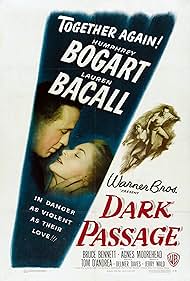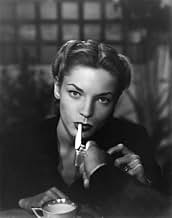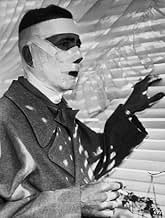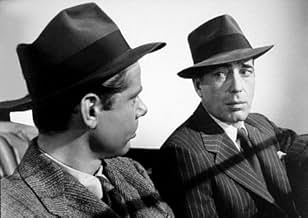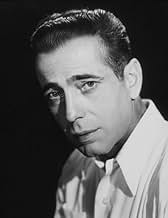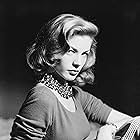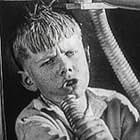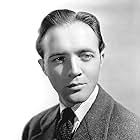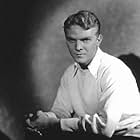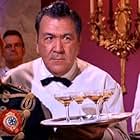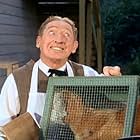A man convicted of murdering his wife escapes from prison and works with a woman to try to prove his innocence.A man convicted of murdering his wife escapes from prison and works with a woman to try to prove his innocence.A man convicted of murdering his wife escapes from prison and works with a woman to try to prove his innocence.
John Alvin
- Blackie
- (scenes deleted)
John Arledge
- Lonely Man
- (uncredited)
Leonard Bremen
- Bus Ticket Clerk
- (uncredited)
Clancy Cooper
- Man on Street Seeking Match
- (uncredited)
Deborah Daves
- Child with Aunt Mary
- (uncredited)
Michael Daves
- Michael
- (uncredited)
Tom Fadden
- Diner Counterman Serving Parry
- (uncredited)
Bob Farber
- Policeman
- (uncredited)
Mary Field
- Aunt Mary
- (uncredited)
- Director
- Writers
- All cast & crew
- Production, box office & more at IMDbPro
Storyline
Did you know
- TriviaThe actual 1937 Art Deco apartment building used in the film (located at 1360 Montgomery St. in San Francisco) is still standing as of 2023. The apartment (No. 10) is marked by a cardboard cut-out of Humphrey Bogart, which can be seen from the street. The site is visited frequently by fans of vintage film noir. The unit has one bath, one bedroom and 861 square feet, and was last sold in 2016 for $1.5M.
- GoofsAfter Parry's bandages are removed, there are no stitches or bruises, nor is there the sort of facial swelling that always results from plastic surgery.
- Quotes
Vincent Parry: You know, it's wonderful when guys like you lose out. Makes guys like me think maybe we got a chance in this world.
- Alternate versionsAlso available in a computer-colorized version.
- ConnectionsEdited from San Quentin (1937)
- SoundtracksToo Marvelous for Words
(uncredited)
Music by Richard A. Whiting
Lyrics by Johnny Mercer
Performed on record twice by Jo Stafford
Also played on the jukebox at the bus station
Also played at the cafe in Peru and during the end credits
Featured review
The absorbing documentary featurette on the DVD edition of the 1947 mystery DARK PASSAGE (DP) suggests that Humphrey Bogart and Lauren Bacall's participation in the star-studded Committee for the First Amendment, intended to defend colleagues called before the HUAC, might have been the reason that DP wasn't as big a hit as the real/reel-life couple's earlier screen collaborations. However, I suspect that audiences past and present may have found DP harder to cozy up to because, instead of the cool, insolent, wisecracking Bogart & Bacall of TO HAVE AND HAVE NOT and THE BIG SLEEP, this film version of David Goodis' novel THE DARK ROAD presents a more melancholy, vulnerable Bogart & Bacall -- which is not at all a bad thing, just unexpected from this star team at that time. That Bogart & Bacall chemistry is still there, but it's sweeter here, as if they'd decided to let down their collective guard and allow tenderness to take over. Instead of the cocksure Bogart character we all know and love, DP protagonist Vincent Parry is wary, fearful, fumbling in his attempts to clear himself of his wife's murder and elude the cops like he escapes from prison in the film's opening scenes. His only allies include the mysterious Irene Jansen (Bacall), who followed his case during his trial and ends up in a position to help hide him while he proves his innocence, and Sam (Tom D'Andrea), a kindly, lonesome cabbie who steers Parry to a back-alley plastic surgeon (Houseley Stevenson) to get a new face to help him fly under the law's radar.
1947 was The Year of the Subjective Camera, with DP's first hour shot from Bogart's point of view and Robert Montgomery's film adaptation of Raymond Chandler's LADY IN THE LAKE (which I've discussed elsewhere on the IMDb) using the technique throughout. Unlike LADY..., DP's plastic surgery gimmick provides a good plot reason for the audience not to initially see Bogart's face, though we frequently hear that unmistakable Bogart voice to make up for it. We also get to see the lovely Bacall and lots of spellbinding character actors in lieu of Bogie. There isn't an uninteresting face or a bad performance in the bunch, with standout performances from the leads, D'Andrea, Stevenson (wise, kindly, and vaguely sinister all at once), Rory Mallinson as Parry's musician friend, the ever-dependable Bruce Bennett, cheap hood Clifton Young (with an oily grin and a cleft chin that looks like it got lost on the way to Cary Grant's face), and especially the magnificent Agnes Moorehead as Madge Rapf, the kind of woman who won't join any club that'll have her as a member, a stylish dame who spreads stress and misery wherever she goes. Sticking her nose into everyone's business, Madge manages to lure people to her and push them away at the same time, and if she can't have you, she'll make damn sure nobody else canhave you, even if that means murder. With her delivery dripping honey one minute and venom the next (especially in her climactic scene with Bogart), the quicksilver Moorehead's commanding presence and her unconventional, undeniably striking good looks ensure that you can't take your eyes off her whenever she's on screen.
If you're looking for a tight mystery plot, look elsewhere. While DP has many suspenseful moments, it's primarily a character study and a mood piece about loneliness, redemption, and starting over, with a strong undercurrent of postwar paranoia, all underscored beautifully by Franz Waxman's stirring music (with contributions by an uncredited Max Steiner). The bus station scene is a touching example of this. But the reactions of people who meet Parry with his post-op face and new name, "Allan Linnell," are so suspicious I wondered if writer/director Delmer Daves (who cameos as the photo of Irene's doomed dad. His real-life kids have bit parts, too) was indicating that Parry was really projecting his own paranoia onto the people around him. His new name in particular makes people look at him like he just dropped in from the planet Neptune: "Linnell? That's a very unusual name." What's so freakin' unusual about it?! What, it's not blandly Anglo-Saxon enough? I wonder if John Linnell of They Might Be Giants fame ever had to field such questions...but I digress... :-)
Even when DP drops the subjective camera style so we can see Bogart in all his glory, the visuals are striking thanks to Sid Hickox's moody black-and-white photography (although with the emphasis on Madge's love of all things orange, I can imagine a partly-colorized version a la SIN CITY, with everything black-and-white except Madge's orange clothes and belongings... :-) and some innovative visual techniques. I particularly liked the use of the glass floor when Bogart discovers a dead body -- a tip of the hat to Alfred Hitchcock's THE LODGER, perhaps? Speaking of Hitchcock, DP and Hitch's 1958 classic VERTIGO might make an interesting double feature since they share themes of loss, loneliness, new identities and fresh starts as well as a San Francisco setting. If you want to see a softer side of Bogart & Bacall, DP is well worth watching. You may also enjoy the DVD's other fun extras, like the original theatrical trailer (for me, the hyperbole of that era's movie trailers is part of their charm) and SLICK HARE, one of the Bugs Bunny cartoons affectionately lampooning Bogart (rumor has it that Bogart liked to pal around with the animators at Warner Bros.' "Termite Terrace" and he actually did his own voice work for SLICK HARE and 8-BALL BUNNY).
1947 was The Year of the Subjective Camera, with DP's first hour shot from Bogart's point of view and Robert Montgomery's film adaptation of Raymond Chandler's LADY IN THE LAKE (which I've discussed elsewhere on the IMDb) using the technique throughout. Unlike LADY..., DP's plastic surgery gimmick provides a good plot reason for the audience not to initially see Bogart's face, though we frequently hear that unmistakable Bogart voice to make up for it. We also get to see the lovely Bacall and lots of spellbinding character actors in lieu of Bogie. There isn't an uninteresting face or a bad performance in the bunch, with standout performances from the leads, D'Andrea, Stevenson (wise, kindly, and vaguely sinister all at once), Rory Mallinson as Parry's musician friend, the ever-dependable Bruce Bennett, cheap hood Clifton Young (with an oily grin and a cleft chin that looks like it got lost on the way to Cary Grant's face), and especially the magnificent Agnes Moorehead as Madge Rapf, the kind of woman who won't join any club that'll have her as a member, a stylish dame who spreads stress and misery wherever she goes. Sticking her nose into everyone's business, Madge manages to lure people to her and push them away at the same time, and if she can't have you, she'll make damn sure nobody else canhave you, even if that means murder. With her delivery dripping honey one minute and venom the next (especially in her climactic scene with Bogart), the quicksilver Moorehead's commanding presence and her unconventional, undeniably striking good looks ensure that you can't take your eyes off her whenever she's on screen.
If you're looking for a tight mystery plot, look elsewhere. While DP has many suspenseful moments, it's primarily a character study and a mood piece about loneliness, redemption, and starting over, with a strong undercurrent of postwar paranoia, all underscored beautifully by Franz Waxman's stirring music (with contributions by an uncredited Max Steiner). The bus station scene is a touching example of this. But the reactions of people who meet Parry with his post-op face and new name, "Allan Linnell," are so suspicious I wondered if writer/director Delmer Daves (who cameos as the photo of Irene's doomed dad. His real-life kids have bit parts, too) was indicating that Parry was really projecting his own paranoia onto the people around him. His new name in particular makes people look at him like he just dropped in from the planet Neptune: "Linnell? That's a very unusual name." What's so freakin' unusual about it?! What, it's not blandly Anglo-Saxon enough? I wonder if John Linnell of They Might Be Giants fame ever had to field such questions...but I digress... :-)
Even when DP drops the subjective camera style so we can see Bogart in all his glory, the visuals are striking thanks to Sid Hickox's moody black-and-white photography (although with the emphasis on Madge's love of all things orange, I can imagine a partly-colorized version a la SIN CITY, with everything black-and-white except Madge's orange clothes and belongings... :-) and some innovative visual techniques. I particularly liked the use of the glass floor when Bogart discovers a dead body -- a tip of the hat to Alfred Hitchcock's THE LODGER, perhaps? Speaking of Hitchcock, DP and Hitch's 1958 classic VERTIGO might make an interesting double feature since they share themes of loss, loneliness, new identities and fresh starts as well as a San Francisco setting. If you want to see a softer side of Bogart & Bacall, DP is well worth watching. You may also enjoy the DVD's other fun extras, like the original theatrical trailer (for me, the hyperbole of that era's movie trailers is part of their charm) and SLICK HARE, one of the Bugs Bunny cartoons affectionately lampooning Bogart (rumor has it that Bogart liked to pal around with the animators at Warner Bros.' "Termite Terrace" and he actually did his own voice work for SLICK HARE and 8-BALL BUNNY).
Details
Box office
- Budget
- $1,600,000 (estimated)
- Gross worldwide
- $9,693
- Runtime1 hour 46 minutes
- Color
- Aspect ratio
- 1.37 : 1
Contribute to this page
Suggest an edit or add missing content

